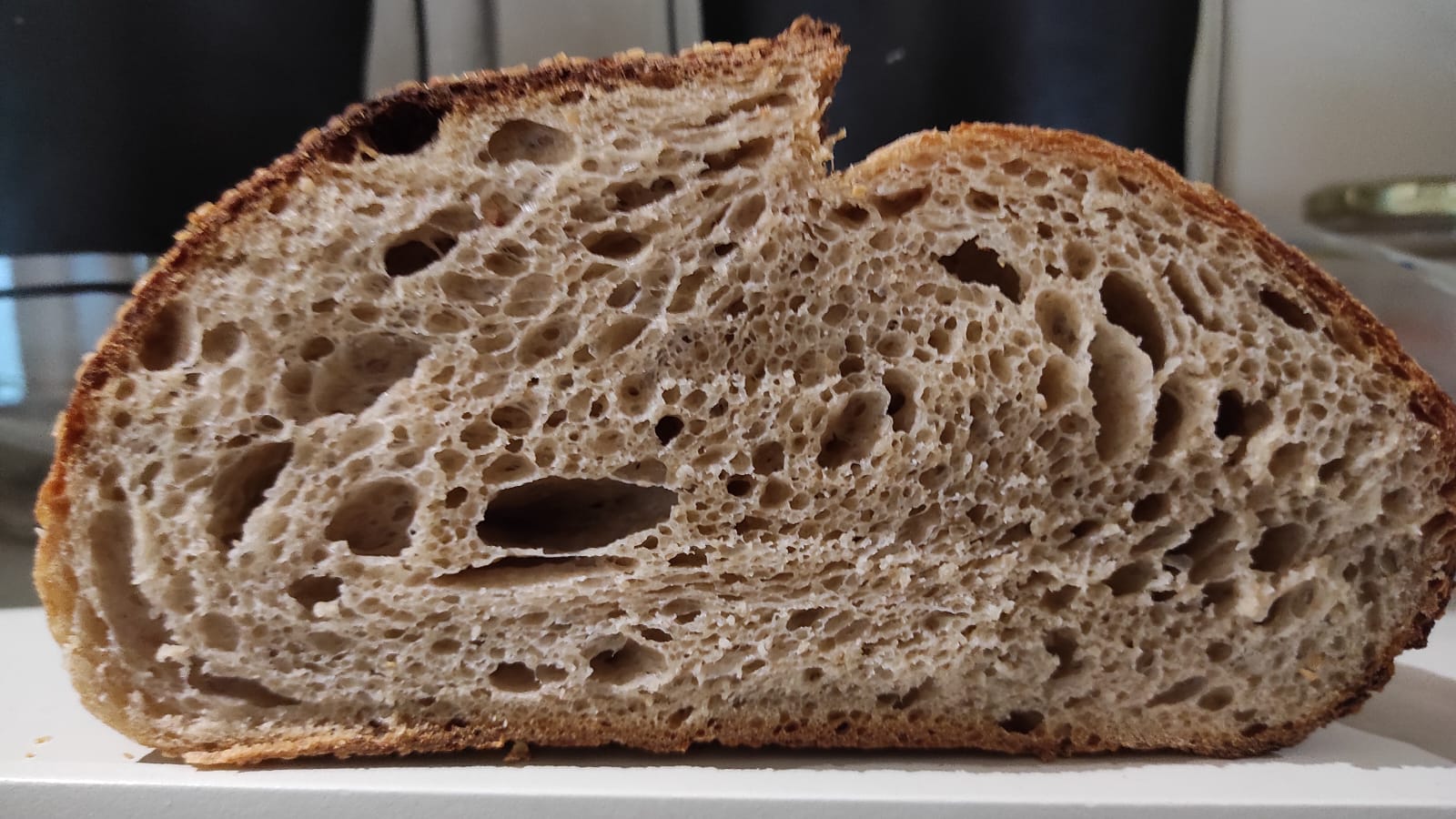My starter is already quite sour and full of character, so if I use more of it, I’m directly adding those flavors sraight into the dough, but by using more starter it will result in less fermentation time, and less proofing time, which means less sour and less character developed through fermentation and proofing.
On the other hand, if I use less starter, the dough is starting off with less of that initial flavor and character, but the lower starter amount means longer fermentation and proof times, which means more character in the final product.
So which is more impactful to the flavors of the final loaf? The extra initial starter, or the longer fermentation and proof times?
To get more acid production you are going to want a more anaerobic environment. So a denser preferment made over a longer time at colder temp.
You’ll get your best sour notes from an extended rise in the fridge after bulk ferment.
This is already part of my normal routine. I usually go for 24 hours.
More time at lower temperatures gives the lactobacillus more time to thrive and greater the sourness you crave.
I had the same problem when working on getting San Francisco sourdough correct. I realized the trick is to leave your starter on the counter for longer. I took my starter out of the fridge and left it on the counter for 3 or 4 days until it really started getting funky smelling. This helps develop the lactic acid cultures (sourness from lactic acid) and Acetobacter cultures(sourness and aroma from acetic acid/vinegar). The Acetobacter cultures eat ethanol (the clear hooch/liquid that forms) that yeast produce when metabolizing sugars. Leaving it out of the fridge helps develops flavor, sourness and aroma because fridge tempuratures stifle growth. Start with this and use you regular amount of starter as a baseline and then add or subract starter as to your preference. I hope this helps. P.S. don’t let your significant other accidently dump out your starter because they think something went off in a jar on your counter :l
I usually do make bread every weekend and keep my starter in the fridge between use and between feedings. Maybe this is why my starter makes such mild bread. If keeping it out at room temps for a few days changes the actual biodome of the starter itself, then is this something you have to do constantly (keep it at room temps) to maintain, or is this something you just do once in a while to re-establish those specific cultures?
I think once in while is what i was doing. This was back in 2014. Probably depends on how often you’re making bread too.
The way I figure it with sourdough and especially San Francisco sourdough, is the miners who were making it originally were leaving their starters unrefrigerated and probably feeding their starters every day. They’d make their dough in the morning and bake their bread in the evening after work, so everything is getting constantly refreshed.
If you’re not making it constantly I’d just feed it leave it out for a day to normalize and put it into the fridge to slow everything down and repeat when you use it again.
I see baking as an art and a science. Everything is an experiment and the kitchen is your lab and your studio. You’re the master of your kitchen and have free reign to try anything. Why not split your starter and test out multiple approaches to see what works best in your opinion? Everything you make will turn into bread barring burning it or forgetting the salt. If you make more loaves than you eat just share it with others. Turns out people innately enjoy eating bread. The only hard rules are salt your bread and don’t burn it.
Cold and longer fermentation as it was already noted below. However, I would also like to add another idea: whole grain flours. Even smaller percentages are giving you a fuller flavour. Especially fresh milled is very interesting.
I’m a big fan of whole grain flours - and always add some amount of whole rye and whole wheat to most of my breads. I’m also a big fan of whole spelt and use that a lot.
I made another batch of dough yesterday - hard to get long fermentations when it’s 90f (32c) inside the house. Used ice water to make the dough, and I experimented with fermenting my dough in a bowl sitting on some cold-packs all day and managed to keep the dough at 72f (22c) most of the day. Still was only able to drag fermentation out to 8 hours (and that was starting with half my normal amount of starter for a 5% inoculation. It went into the fridge overnight for finish with a long cold proof, so I won’t have my results until tonight when I bake it.
Add vinegar - problem solved.
Have you actually tried this?


